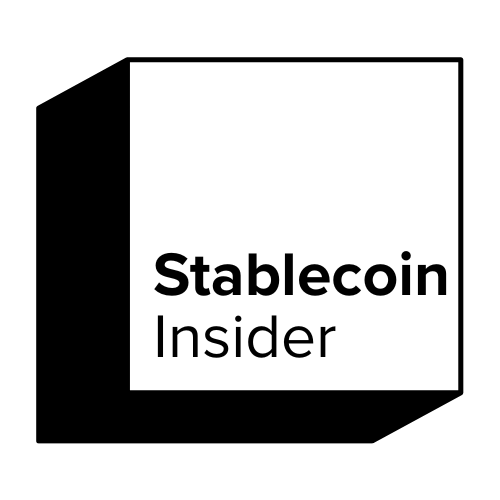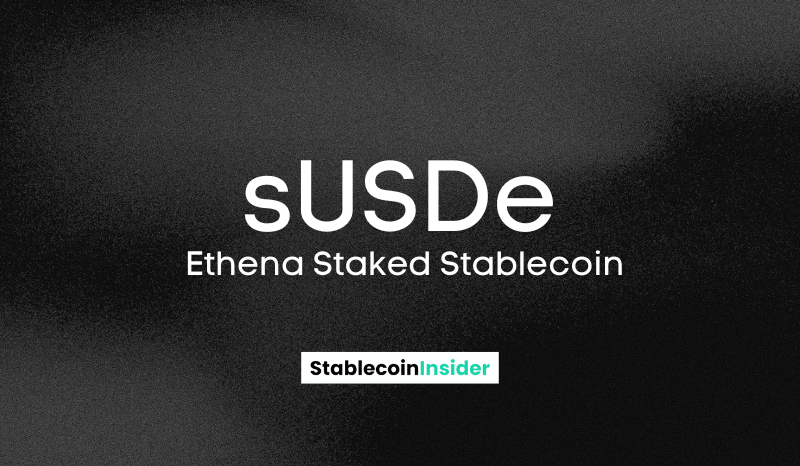Ethena is a rising protocol in the decentralized finance (DeFi) ecosystem, known for launching USDe—a synthetic, yield-bearing stablecoin.
Unlike traditional fiat-backed or overcollateralized stablecoins, USDe is maintained through a delta-neutral strategy that combines collateralized assets and perpetual futures.
This review offers an in-depth analysis of USDe and its staked counterpart, sUSDe, covering design, utility, security, performance, and associated risks.
Key Takeaways
- USDe is a synthetic stablecoin designed to maintain a dollar peg using delta-neutral strategies
- sUSDe offers yield through staking, appealing to DeFi users seeking stable income
- Ethena’s risk management relies on hedging, exchange integrations, and funding rate dynamics
- The protocol has gained rapid traction but remains exposed to exchange and strategy-specific risks
- USDe stands out from collateralized stablecoins with its innovative but complex synthetic model
What is USDe?
USDe is a synthetic stablecoin pegged to the U.S. dollar but not backed 1:1 by fiat reserves. Instead, it maintains its peg using a delta-neutral strategy: Ethena deposits user collateral into centralized exchanges and opens short positions in perpetual futures to offset long exposure. The result is a non-directional position that minimizes volatility.
This makes USDe distinct from traditional stablecoins like USDC or USDT, which are backed by fiat or assets held in custody. It’s also different from crypto-collateralized models like DAI. The synthetic nature of USDe allows for higher capital efficiency but introduces a unique set of risks.
Introduction to Ethena Staking
sUSDe is the staked version of USDe. When users stake USDe, they receive sUSDe, which accrues yield generated from funding rate arbitrage opportunities on exchanges.
This yield is earned through a delta-neutral basis trade: borrowing spot assets, shorting them via futures, and capturing the funding rate differential.
Staking USDe is permissionless and doesn’t involve fixed lockups, though smart contract risks and exchange exposure still apply. Returns vary based on market conditions, particularly funding rates on platforms like Binance, OKX, and Bybit.
Tokenomics & Utility
USDe is minted by depositing USDC or other stable assets into Ethena, which are used as collateral for futures positions.
Redemptions work in reverse—users burn USDe to retrieve their deposited collateral.
sUSDe’s utility is expanding in the DeFi space. It can be used as collateral, in liquidity pools, and in staking programs across ecosystems like Arbitrum and Ethereum. Incentives are often provided via ENA tokens or boosted APYs, encouraging adoption and integration.
Security & Risk Management
Ethena emphasizes risk mitigation through automation and conservative risk parameters. Smart contracts have undergone audits by firms such as Zellic and Trail of Bits. The protocol diversifies its CEX exposure and monitors funding rate volatility to maintain peg stability.
Nevertheless, reliance on CEXs introduces counterparty risk. If funding rates turn negative or exchanges delist key pairs, the yield model could fail. Additionally, liquidation risks exist if volatility spikes rapidly.
Market Performance & Ecosystem Integration
Since launch, USDe’s total value locked (TVL) has grown rapidly, surpassing $3 billion in a few months. It is listed on top DEXs and CEXs, including Binance and Bybit, and is integrated into major DeFi protocols such as Pendle, Curve, and Gearbox.
Community reception has been generally positive, with users praising its innovation and yield opportunities. However, critics highlight the systemic risks of relying on CEXs for peg stability.
Comparisons with Other Stablecoins
- USDe vs. USDC/USDT: Unlike fiat-backed coins, USDe does not rely on off-chain reserves. It’s more capital-efficient but less transparent.
- USDe vs. DAI: DAI uses overcollateralization with crypto assets; USDe uses market-neutral trading strategies.
- USDe vs. GHO/crvUSD: Both GHO and crvUSD are on-chain native and aim for decentralization. USDe is more centralized due to CEX exposure.
Who Should Use USDe or sUSDe?
USDe is ideal for users who:
- Want exposure to a high-yield stable asset
- Are comfortable with some CEX and smart contract risk
- Seek diversification beyond traditional stablecoins
sUSDe benefits DeFi power users, liquidity providers, and those seeking passive income without exposure to volatile tokens.
Future Roadmap and Developments
Ethena’s roadmap includes:
- Further decentralizing oracle and collateral systems
- Multi-chain deployment beyond Ethereum
- Integrating with RWAs (real-world assets)
- Governance through the ENA token
The vision is to make USDe a synthetic global dollar alternative for the internet economy.
How to Use USDe and sUSDe Step-by-Step
- Acquire USDe: Purchase on DEXs like Curve or on CEXs like Binance.
- Stake USDe: Visit the Ethena dashboard and stake to receive sUSDe.
- Earn Yield: Your sUSDe automatically accrues rewards from delta-neutral yield strategies.
- Use in DeFi: Deploy sUSDe in pools, farms, or lending platforms for additional earnings.
Popular tools: Ethena App, DeBank, Dune dashboards.
Regulatory Considerations
Synthetic stablecoins are in a regulatory gray area. Since USDe is not fiat-backed, it may not qualify as “electronic money” under current frameworks.
However, its reliance on centralized exchanges and exposure to U.S. users could attract scrutiny. Projects like Ethena may eventually require licenses or registration depending on jurisdiction.
Institutional Interest & Adoption
Institutional participation in synthetic stablecoins remains limited but growing. Yield opportunities from delta-neutral strategies may appeal to hedge funds and market makers familiar with basis trading.
However, regulatory uncertainty and CEX reliance are major hurdles for large institutions. Future improvements in transparency and decentralization could drive adoption.
Onchain Metrics to Watch
- Circulating Supply: Indicates growing demand and usage
- Staking Ratio: Higher ratio = greater trust in yield generation
- Funding Rate Trends: Directly impacts sUSDe APY
Dashboards: Dune Analytics (Ethena), DeFiLlama, Token Terminal
Conclusion
USDe and sUSDe present a novel take on stablecoins, offering yield, flexibility, and capital efficiency. For users comfortable with exchange and funding rate risk, USDe could be a powerful tool in a diversified DeFi portfolio. However, conservative investors may prefer more transparent or fiat-backed alternatives.
Related:
FAQ
- Is USDe fully backed by dollars?
- No, USDe is a synthetic stablecoin backed by a delta-neutral strategy involving perpetual futures and collateral assets.
- How is yield generated for sUSDe holders?
- Through funding rate arbitrage between spot and futures markets, captured by the Ethena protocol.
- Can USDe lose its peg?
- While the strategy is designed to maintain the peg, extreme market conditions or exchange disruptions may impact stability.
- Where can I buy or stake USDe?
- USDe and sUSDe are available on supported DeFi protocols and centralized exchanges; check Ethena’s official site for up-to-date listings.
- Is Ethena audited?
- Yes, Ethena’s smart contracts have undergone audits. Links to audits are typically available via their documentation.
Additional Resources

